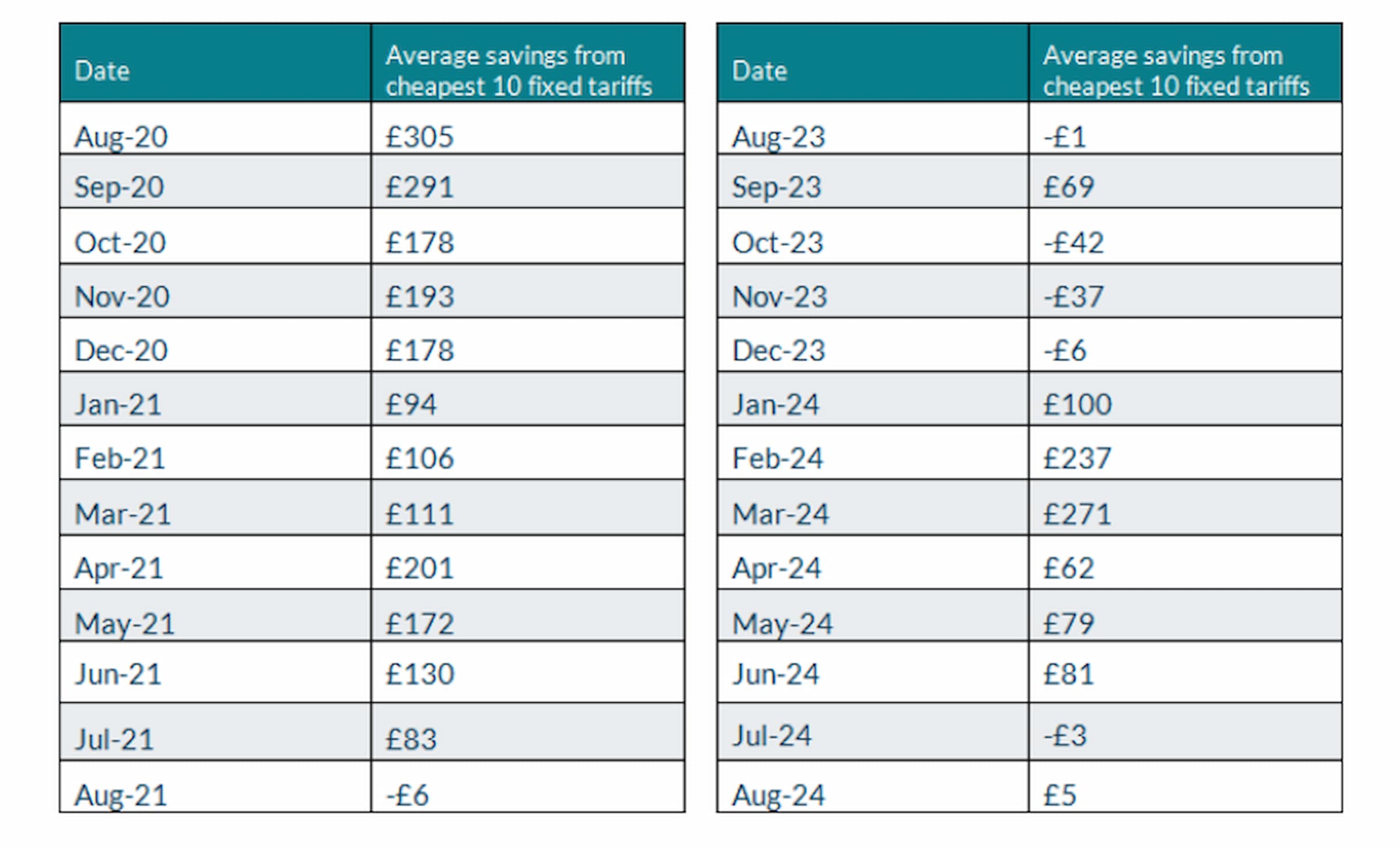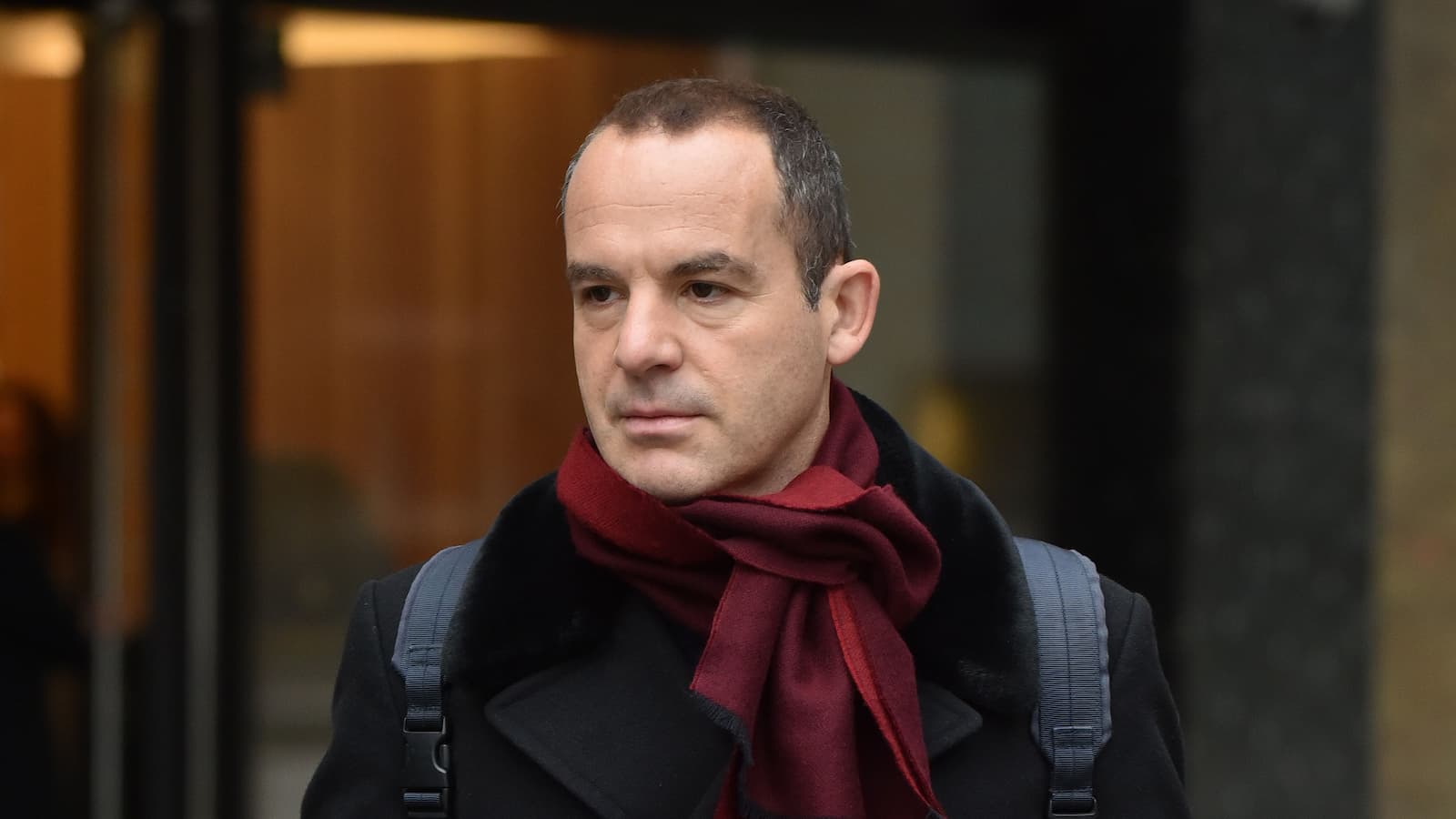Fixed energy price tariffs might not be what they’re cracked up to be, research suggests
Homeowners on average will save only £5 a year when using fixed energy price tariffs

Fixed energy price tariffs, once a go-to for savvy savers, may no longer be worth the hype, according to research.
New analysis by Cornwall Insight shows that the average savings from locking into the top ten cheapest fixed-rate tariffs are now a mere £5 per year compared to the energy price cap – down from potential savings of £60 to £80 just a few months ago.
As energy price rises and regulatory decisions reshape the market, consumers might be left wondering if switching is still worth the effort. Could this be the end of the fixed tariff's reign as the budget-conscious choice for energy customers?
What are fixed energy price tariffs?
Fixed energy price tariffs are contracts offered by energy suppliers where the price per unit of energy (electricity or gas) is locked in for a specific period, typically one to three years.
This means that, regardless of fluctuations in wholesale energy prices or changes to the government's energy price cap, the rate you pay for each unit of energy remains constant throughout the duration of the contract.
While this can provide consumers with protection against price hikes and help with budgeting, it also means they won't benefit if energy prices drop.
Fixed energy tariffs save an average of just £5 a year
Analysis from Cornwall Insight, an independent firm specialising in energy research, reveals that the average savings from the top ten cheapest fixed-rate tariffs on the open market now amount to just £5 annually compared to the price cap.
Get the Homebuilding & Renovating Newsletter
Bring your dream home to life with expert advice, how to guides and design inspiration. Sign up for our newsletter and get two free tickets to a Homebuilding & Renovating Show near you.
This marks a significant decline in potential savings, as customers could previously save between £60 and £80 per year.
The reduction in savings is partly due to anticipated increases in the price cap this October, leading to the disappearance of many lower-priced fixed tariffs.
Although earlier in 2024, there was a brief period where savings reached hundreds of pounds due to unusually low wholesale prices, fixed tariffs have since leveled off, offering little financial incentive.
James Mabey, Analyst at Cornwall Insight, said: “For some time, people have been getting their hopes up about a return to significant fixed tariff savings. Unfortunately, the optimism may have been premature.
"Earlier this year, there were glimpses of savings in the hundreds of pounds, but fixed tariffs have since crept back up to around the same annual cost as the price cap, and the current £5 difference is unlikely to be enough to motivate most people to switch."

Will the fixed energy price tariff market improve?
Although current savings from fixed energy price tariffs may be minimal, this could change if the energy price cap rises again.
Cornwall Insight predicts a 9% increase in the energy price cap in October, representing a £146 annual rise, which suggests now might be a good time to consider fixing your energy tariff
Experts like Martin Lewis suggest that if you find a fixed deal no more than 9% higher than the current price cap, it could be worth locking in, especially if you have high energy usage.
However, if you are on a long-term deal exit fees can be high and the potential savings may outweigh these costs. Additionally, some of the best fixed deals might only be available to existing customers.
James Mabey stated: “Whether the fixed tariff market will improve is up for debate, but based on our data, it is unlikely we will see a return to consistent three-figure savings anytime soon.”

News Editor Joseph has previously written for Today’s Media and Chambers & Partners, focusing on news for conveyancers and industry professionals. Joseph has just started his own self build project, building his own home on his family’s farm with planning permission for a timber frame, three-bedroom house in a one-acre field. The foundation work has already begun and he hopes to have the home built in the next year. Prior to this he renovated his family's home as well as doing several DIY projects, including installing a shower, building sheds, and livestock fences and shelters for the farm’s animals. Outside of homebuilding, Joseph loves rugby and has written for Rugby World, the world’s largest rugby magazine.
